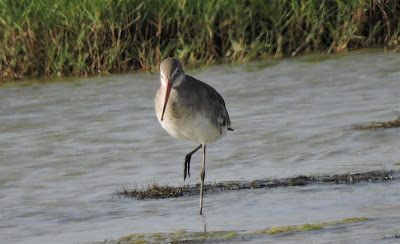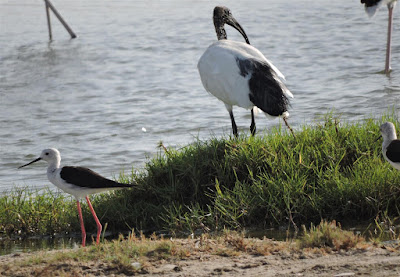The highlight was an adult yellow bittern which remained fully exposed for a minute or so.
yellow bittern 1
A few minutes earlier I had seen a little bittern fly over the khawr. It appears both breed there.
yellow bittern 2
Elsewhere in the Khawr at the sandbar, I came across two black-tailed godwit along with the expected and local black-winged stilt.
black-tailed godwit 1
Both birds were in non-breeding plumage.
black-tailed godwit 2
There are very few migrant waders around at this time of year but they are especially worth looking at as the proportion that are rarities is often higher.
African sacred ibis
Mentioning rarities, an African sacred ibis was present which was associating with the flamingo.
One was present here from April 2014 until March 2015 then it or another started appearing ar Khawr Rori. I think it is likely the same bird and it seems now to be alternating between the two sites.
three greenshank
African silverbill
None water birds can also be seen at East Khawr though there are no really special breeders as far as I can tell. African silverbill is showing signs of breeding at the moment. The bird above has nesting material.
white spectacled bulbul
White spectacled bulbul is readily observed.
graceful prinia
In some ways it is quite surprising that no type of reed warbler breeds here. The niche is filled by graceful prinia whose nests can be seen often gangling quite close to the water's edge. There are many of the birds about at the moment so I assume breeding is finished and numbers swollen by first year birds.
flamingo
On the floating vegetation and often exposed right in the middle of the khawr were many adult and young moorhen.
Abyssinian white eye
On the west side of the khawr is a very narrow strip of mangroves whereas the middle and east side is reeds. The last birds I saw at dusk as I left were a pair of Abyssinian white eye.












No comments:
Post a Comment